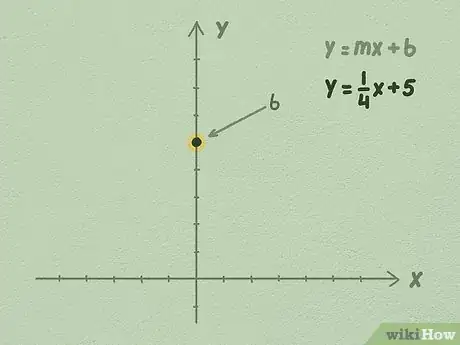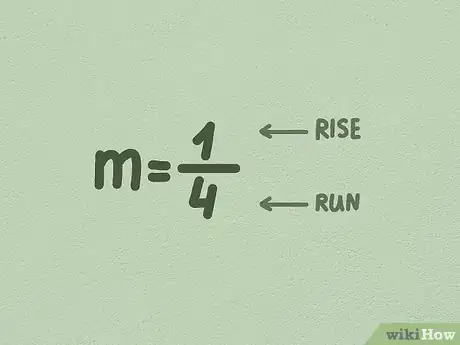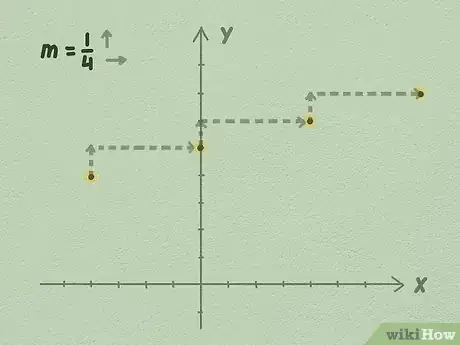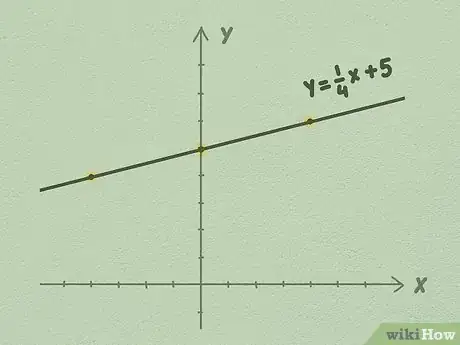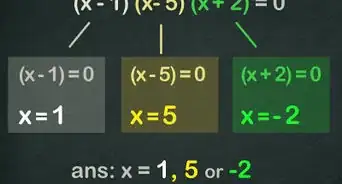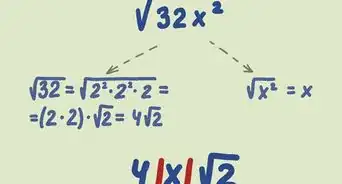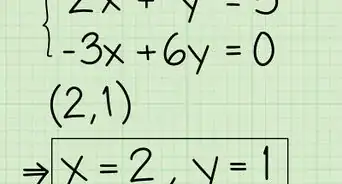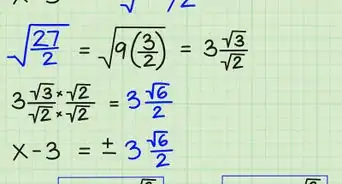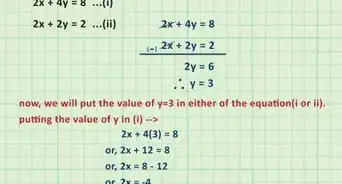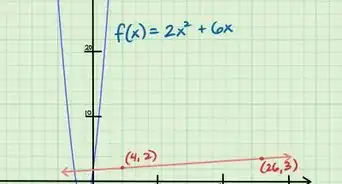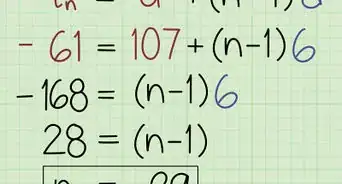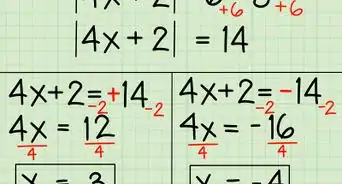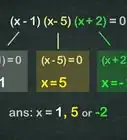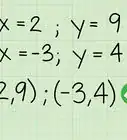wikiHow is a “wiki,” similar to Wikipedia, which means that many of our articles are co-written by multiple authors. To create this article, 42 people, some anonymous, worked to edit and improve it over time.
There are 7 references cited in this article, which can be found at the bottom of the page.
This article has been viewed 459,287 times.
Learn more...
Are you stuck not knowing how to draw a linear equation without using a calculator? Luckily, drawing a graph of a linear equation is pretty simple! All you need to know is a couple things about your equation and you're good to go. Let's get started!
Steps
-
1Make sure the linear equation is in the form y = mx + b. This is called the y-intercept form, and it's probably the easiest form to use to graph linear equations. The values in the equation do not need to be whole numbers. Often you'll see an equation that looks like this: y = 1/4x + 5, where 1/4 is m and 5 is b.[1]
- m is called the "slope," or sometimes "gradient."[2] Slope is defined as rise over run, or the change in y over the change in x.
- b is defined as the "y-intercept." The y-intercept is the point at which the line crosses the Y-axis.[3]
- x and y are both variables. You can solve for a specific value of x, for example, if you have a y point and know the m and b values. x, however, is never merely one value: its value changes as you go up or down the line.
-
2Plot the b number on the Y-axis. Your b is always going to be a rational number. Just whatever number b is, find its equivalent on the Y-axis, and put the number on that spot on the vertical axis.[4]
- For example, let's take the equation y = 1/4x + 5. Since the last number is b, we know that b equals 5. Go 5 points up on the Y-axis and mark the point. This is where your straight line will pass through the Y-axis.
Advertisement -
3Convert m into a fraction. Often, the number in front of x is already a fraction, so you won't have to convert it. But if it isn't, convert it by simply placing the value of m over 1.[5]
- The first number (numerator) is the rise in rise over run. It's how far the line travels up, or vertically.
- The second number (denominator) is the run in rise over run. It's how far the line travels to the side, or horizontally.
- For example:
- A 4/1 slope travels 4 points up for every 1 point over.
- A -2/1 slope travels 2 points down for every 1 point over.
- A 1/5 slope travels 1 point up for every 5 points over.
-
4Start extending the line from b using slope, or rise over run. Start at your b value: we know that the equation passes through this point. Extend the line by taking your slope and using its values to get points on the equation.[6]
- For example, using the illustration above, you can see that for every 1 point the line rises up, it travels 4 to the right. That's because the slope of the line is 1/4. You extend the line indefinitely along both sides, continuing to use rise over run to graph the line.
- Whereas positive-value slopes travel upward, negative-value slopes travel downward. A slope of -1/4, for example, would travel down 1 point for every 4 points it travels to the right.
-
5Continue extending the line, using a ruler and being sure to use the slope, m, as a guide. Extend the line indefinitely and you're done graphing your linear equation. Pretty easy, isn't it?[7]
Community Q&A
-
QuestionWhat if there is no number for b?
 Community AnswerIt means the y-intercept is 0. Let's say you have something like y = 5x + 0. The 0 would be taken out because anything plus 0 is itself.
Community AnswerIt means the y-intercept is 0. Let's say you have something like y = 5x + 0. The 0 would be taken out because anything plus 0 is itself. -
QuestionWhat if the slope is negative?
 Community AnswerThen the line will go from top left to bottom right. This is because the rise or run is negative.
Community AnswerThen the line will go from top left to bottom right. This is because the rise or run is negative. -
QuestionHow would I graph an equation that is not in slope intercept form? For example: y-2x=0.
 Community AnswerTransfer that into a linear equation by taking 2x and reverse the -2x, which brings it to y=2x+0
Community AnswerTransfer that into a linear equation by taking 2x and reverse the -2x, which brings it to y=2x+0
References
- ↑ https://www.khanacademy.org/math/in-in-grade-9-ncert/in-in-chapter-4-linear-equations-in-two-variables/in-in-graph-of-a-linear-equation-in-two-variables/v/graphs-of-linear-equations
- ↑ http://mathsfirst.massey.ac.nz/Algebra/StraightLinesin2D/Slope.htm
- ↑ https://virtualnerd.com/pre-algebra/linear-functions-graphing/equations/x-y-intercepts/y-intercept-definition
- ↑ https://www.mathsisfun.com/algebra/linear-equations.html
- ↑ https://openstax.org/books/elementary-algebra-2e/pages/4-2-graph-linear-equations-in-two-variables
- ↑ https://www.purplemath.com/modules/slopgrph.htm
- ↑ http://www.wtamu.edu/academic/anns/mps/math/mathlab/col_algebra/col_alg_tut27_graphline.htm
About This Article
To graph a linear equation, start by making sure the equation is in y = mx + b form. Then, plot the b value on the y-axis. Next, convert the m value into a fraction if it's not already by placing it over 1. Once you've done that, start at the point you plotted on the y-axis, and count up the number that's in the numerator of the fraction. From there, count over the number in the denominator, and plot the point on the line. Finally, repeat the process several times, and then connect the points you plotted with a straight line. To learn how to interpret the line you graph, scroll down!

